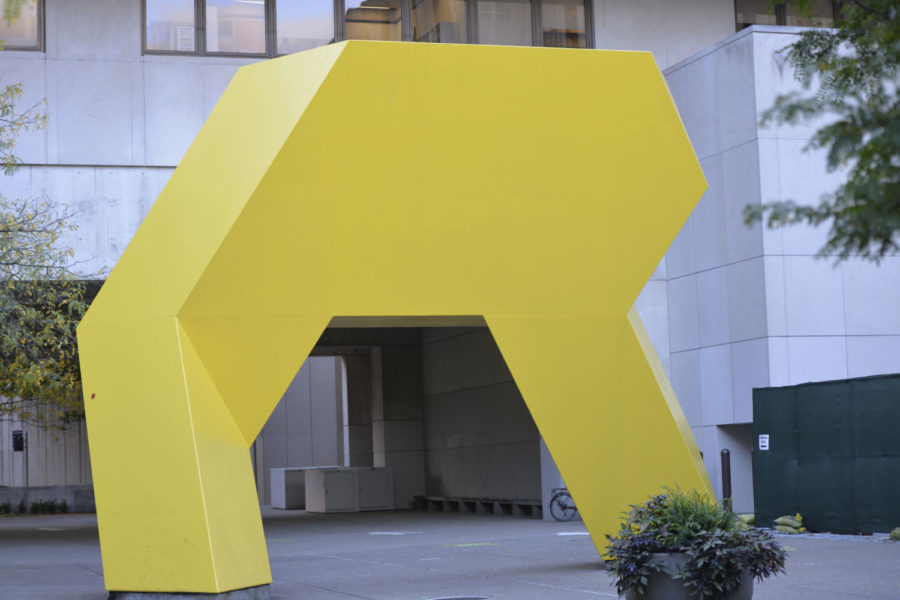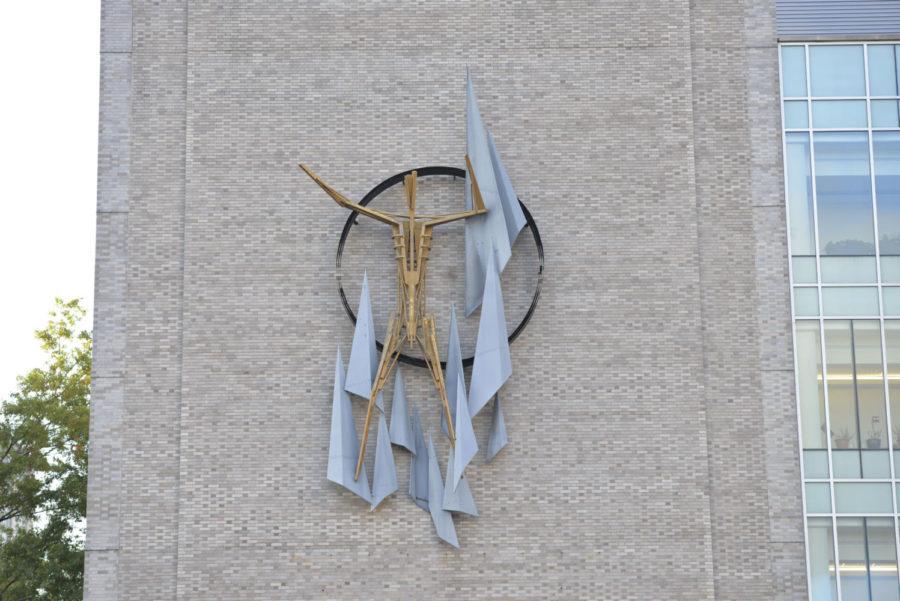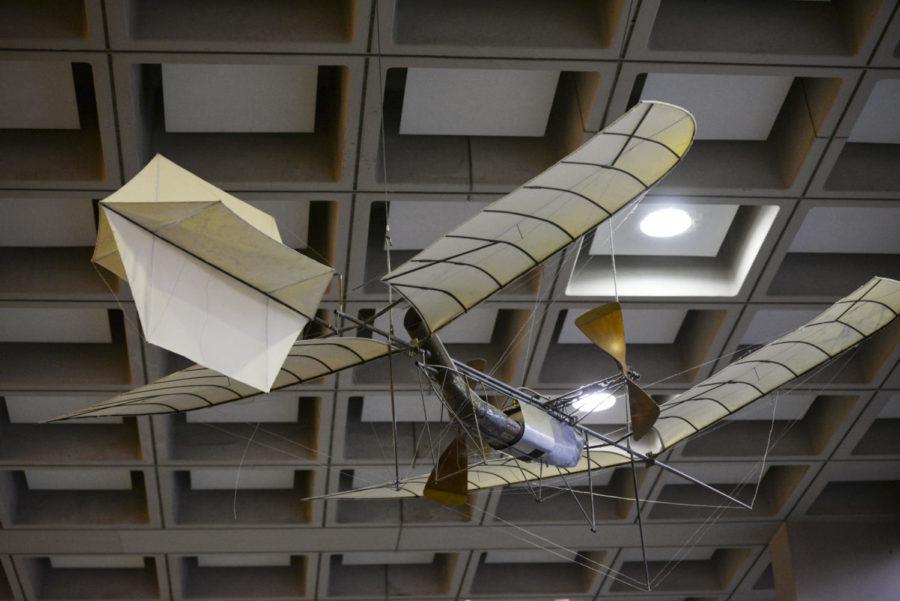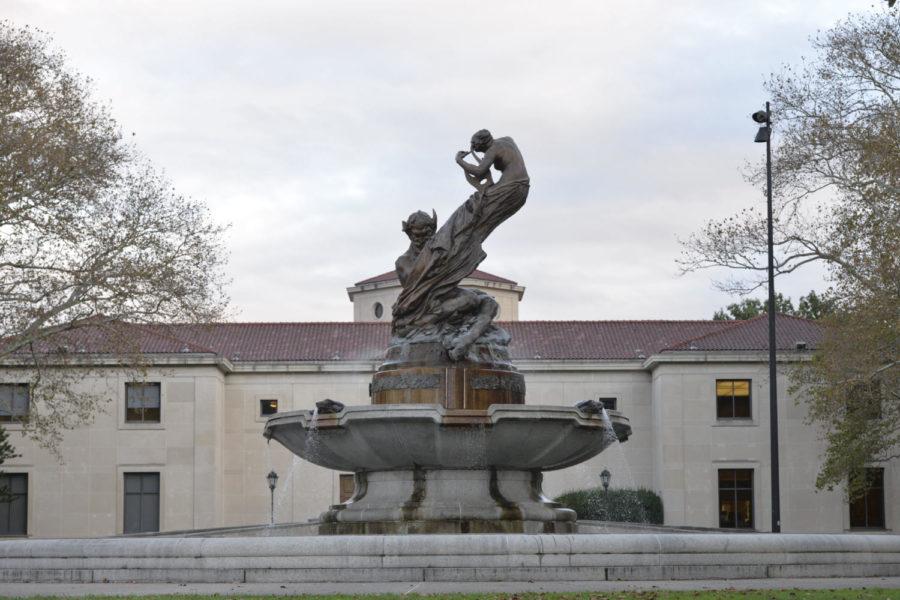Because of displaced, absent or otherwise out-of-sight placards, many works of art often go unattributed or unnoticed on campus.
There could be art installations hanging from a ceiling or beautiful oil paintings of the Cathedral in plain sight, and students and faculty often walk right by them. Art around campus has become background noise — not because these installations aren’t impressive, but because we’ve become accustomed to them.
Whether it’s the eyesore in your lecture hall, the odd statues scattered like Easter eggs around Hillman Library or the critically acclaimed sculpture you walk by on your way to the Cathedral, there are countless examples of overlooked artwork at Pitt that deserve recognition.
“365 Views of the Cathedral of Learning” — Felix de la Concha
Tucked away in a hallway-length gallery on the seventh floor of Alumni Hall, 365 small portraits painted by Spanish artist Felix de la Concha are arranged in a large glass case display. Assembled for the millennium, Concha displays the many views of the Cathedral of Learning through oil paintings he created from 1997 to 1999.
The “One-A-Day” images include glimpses of Cathy from South Oakland homes through all of the Pittsburgh seasons, in order to show her gothic presence in many Pittsburgh skylines. Many of the images are intended as mundane interactions with the architecture, and the building is nearly always partially obscured. Concha worked with oil paints to capture the change in seasons from warm spring afternoons to bitter winter mornings.

“Light Up” — Tony Smith
Always a source of speculation, the 1974 painted steel sculpture first had its home in downtown Pittsburgh, but is now located in the Forbes Quadrangle near Posvar Hall and Hillman Library. The sculpture, painted a bright shade of canary yellow, stands more than 20-feet high.
A Pitt News writer dug into its history in 2013, unearthing the origins of the colorful and oddly large sculpture students walk around every day. The article details how the historic piece’s story has been lost over time. But even though its story has been forgotten, the structure itself can’t be — the bold piece is always visible to passersby, even when buried under a layer of snow.

(Photo by Wenhao Wu | Assistant Visual Editor)
“Man” — Virgil Cantini
Virgil Cantini’s work is seen in many academic buildings across Pitt’s campus, including Posvar Hall, Barco Law Building and Chevron Science Center. An Italian immigrant and lifetime resident of South Oakland, Cantini quickly gained recognition for his work. Among the first of his pieces to be commissioned for the University, the bronze and steel sculpture “Man” pinned to the facade of Parran Hall, which houses the School of Public Health.
Cantini, also a Pitt professor during his long career, created the piece to display images of knowledge and the body. An abstract representation of the human anatomy sits among geometric shapes on the dull exterior of the building which faces the busy traffic on Fifth Avenue.

“Skyscape” — Virgil Cantini
Alongside miscellaneous banners and a historic aerodrome, Virgil Cantini’s “Skyscape” hangs from the ceiling in the first floor lobby of Posvar Hall. Commissioned in 1966 — one year after “Man” — the porcelain and steel piece became Cantini’s staple to decorate Pitt buildings.
The large sculpture features a medley of steel pieces and colored shapes, as Cantini drew from cosmos inspiration. Glass crystals let some light through the spiked iron rods, making the piece an often unnoticed fortress high above commuters’ heads.

“A Song to Nature” or Mary Schenley Memorial Fountain — Victor David Brenner
On the outskirts of Pitt’s campus en route to Schenley Park, the 1918 architectural landmark is more than just a working fountain — the sculpture features the Greek god Pan and a female singer who plays the lyre.
The fountain, and the land donated for the City’s largest green space, pays tribute to well-known philanthropist and Pittsburgh resident Mary Schenley. And the bronze and granite piece was created by the same artist commissioned to design the image of Abraham Lincoln, which is still used on the penny today.


